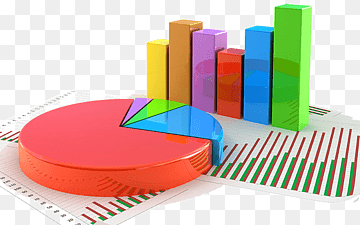Understanding Statistics in Data Science: A Beginner's Guide
 Manav Rastogi
Manav Rastogi
Statistics plays a crucial role in data science, helping us collect, organize, analyze, and interpret data effectively. In this blog, we will explore key statistical concepts and techniques, their significance, and real-life applications.
🔹 Types of Statistics
Statistics is broadly classified into two types:
1️⃣ Descriptive Statistics: It involves summarizing and visualizing data using measures such as mean, median, mode, variance, and standard deviation.
2️⃣ Inferential Statistics: It helps in making predictions and drawing conclusions about a population based on a sample.
💡 Where do we use them?
Descriptive Statistics: When analyzing trends in historical sales data.
Inferential Statistics: When predicting customer behavior based on a survey sample.
📌 Why Statistics in Data Science?
Statistics helps in making data-driven decisions by identifying patterns and relationships.
🔹 Real-life Example: In e-commerce, businesses analyze past purchase behavior to recommend products to customers.
🎯 Techniques of Descriptive Statistics
📍 Measure of Central Tendency
Mean: The average value.
Median: The middle value in an ordered dataset.
Mode: The most frequently occurring value.
📍 Measure of Symmetry
Skewness: Shows whether data is skewed positively or negatively.
Kurtosis: Measures whether data has heavy or light tails compared to a normal distribution.
📍 Measure of Dispersion
Standard Deviation: Measures data spread.
Variance: The square of standard deviation.
Range: Difference between the highest and lowest values.
Percentile & Quartiles: Used to compare scores within a dataset.
Interquartile Range (IQR): Helps detect outliers.
🔍 Types of Sampling
Sampling techniques help in selecting a subset of data for analysis.
1️⃣ Simple Random Sampling: Each individual has an equal chance of selection (e.g., lottery system).
2️⃣ Stratified Sampling: Data is divided into groups (e.g., gender-based customer segmentation).
3️⃣ Cluster Sampling: The population is divided into clusters, and a few clusters are randomly selected (e.g., selecting cities for a survey).
4️⃣ Systematic Sampling: Selecting every nth individual from a list (e.g., quality checks in a factory line).
📊 Types of Data
🔸 Quantitative Data
1️⃣ Discrete: Whole numbers (e.g., number of students in a class).
2️⃣ Continuous: Measurable values (e.g., height, temperature).
🔸 Qualitative Data
1️⃣ Nominal: Categorical data without order (e.g., colors, gender).
2️⃣ Ordinal: Ordered categories (e.g., customer ratings: Poor, Average, Good).
🔢 Scales of Measurement
1️⃣ Interval Scale: Data with equal differences but no true zero (e.g., temperature in Celsius). 2️⃣ Nominal Scale: Categories without any numerical value (e.g., eye color).
3️⃣ Ratio Scale: Data with a true zero (e.g., weight, height).
4️⃣ Qualitative Measure: Non-numeric attributes used in data analysis.
🔗 Covariance and Correlation
Covariance and correlation measure relationships between two variables.
📌 Pearson Correlation Coefficient: Measures the linear relationship between variables, ranging from -1 (negative correlation) to 1 (positive correlation).
🔹 Example: The correlation between hours of study and exam scores.
🚀 Conclusion
Understanding statistics is essential for making informed data-driven decisions. Whether analyzing customer behavior, predicting trends, or optimizing business processes, statistical methods play a fundamental role in data science.
✨ Stay curious and keep exploring the world of data science! 🚀📊
Subscribe to my newsletter
Read articles from Manav Rastogi directly inside your inbox. Subscribe to the newsletter, and don't miss out.
Written by

Manav Rastogi
Manav Rastogi
"Aspiring Data Scientist and AI enthusiast with a strong foundation in full-stack web development. Passionate about leveraging data-driven solutions to solve real-world problems. Skilled in Python, databases, statistics, and exploratory data analysis, with hands-on experience in the MERN stack. Open to opportunities in Data Science, Generative AI, and full-stack development."